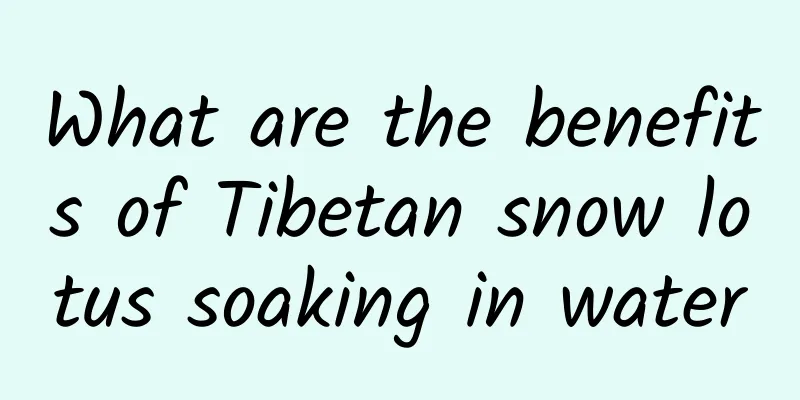Why is Qinling Mountains called the “Central Water Tower”?

|
The Qinling Mountains unite the north and south and benefit the whole world. It is my country's central water tower and an important symbol of the Chinese nation and Chinese culture. From south to north, among the many famous mountains and rivers in my country, the Qinling Mountains are not the most abundant in terms of rainfall and water production. Why is it known as the central water tower? Qinling picture from Xinhua News Agency First of all, the Qinling Mountains have a unique geographical location. It is the natural dividing line between the geology, climate, biology, water system, soil and other geographical elements in the north and south of my country. The unique geographical environment creates abundant water vapor. The southeast monsoon and southwest monsoon carrying warm and humid air currents are the main sources of water vapor for rainfall in the Qinling area. When the monsoon carries water vapor over the Qinling Mountains, the windward slope causes water vapor to rise, forming rainfall, and then forming runoff. For example, about 47% of the rainfall in the Hanjiang River system on the south slope of the Qinling Mountains forms runoff, and about 40% of the rainfall in the Weihe River system on the north slope forms runoff. The Qinling Mountains also have abundant water resources. Many tributaries of the two mother rivers, the Yangtze River and the Yellow River, come from the Qinling Mountains. The water resources on the southern slope of the Qinling Mountains are 18.2 billion cubic meters, accounting for about 58% of the water resources in southern Shaanxi. The Jialing River and the Han River, important tributaries of the Yangtze River, both originate here. The water from the Qinling Mountains contributes about 14.1 billion cubic meters and 4.1 billion cubic meters of water to these two rivers respectively; the water resources on the northern slope of the Qinling Mountains are about 4 billion cubic meters, which nourishes the Weihe River and the Luohe River, important tributaries of the Yellow River. Among them, the Qinling Mountains contribute about 3.5 billion cubic meters of water to the Weihe River, accounting for 40% of the total river runoff. The Qinling Mountains are also a "big water tank" that affects the lives of the people in North China. The water source of the South-to-North Water Diversion Project is the Danjiangkou Reservoir, and 70% of the water in the reservoir comes from the Han River and its tributary Danjiang River, which originate from the Qinling Mountains. From 2021 to 2022, the water diversion of the first phase of the South-to-North Water Diversion Project reached a new historical high of over 9.2 billion cubic meters, benefiting the areas along the Henan, Hebei, Tianjin and Beijing lines. This has written a clear footnote for the Qinling Mountains to become the central water tower. Taocha Canal Head of the South-to-North Water Diversion Middle Route So, how do we understand the “tower” in the Central Water Tower? The main ridge of the Qinling Mountains is between 2,000 and 2,800 meters above sea level, and the highest peak, Mount Taibai, is over 3,700 meters above sea level. The towering mountains have a significant effect on the retention of water vapor, converting a large amount of water vapor into rainfall, which is also an important reason why the "Qinling-Huaihe" line basically coincides with my country's 800 mm precipitation line. Looking down on the land, the Qinling Mountains are like a "tower" rising into the clouds, with waterfalls falling straight down from the top of the mountain and merging into rivers. Nowadays, national water network projects such as the South-to-North Water Diversion Project and the Han-Wei Water Diversion Project are closely related to the Qinling Mountains, and the role of the Central Water Tower is becoming increasingly prominent. Protecting the ecological environment of the Qinling Mountains and maintaining the water conservation capacity of the Qinling Mountains are crucial to ensuring my country's water security. To protect the Qinling Mountains, we must adhere to the integrated protection and systematic management of mountains, rivers, forests, farmlands, lakes, grasslands, and deserts, strengthen vegetation protection, maintain water and soil, protect water sources and wetlands, and increase the efforts to restore and manage the ecological environment, so that the Central Water Tower will always remain vibrant. (The author is Wang Jianhua, Vice President of China Institute of Water Resources and Hydropower Research, and the interview was conducted by Wang Hao, a reporter from People's Daily) |
<<: 5 tips to help you end "impulse buying" and save 100%
Recommend
No need to ask the "melon photographer" for help, just look here to know whether the watermelon is sweet or not!
Midsummer has quietly arrived. The most pleasant ...
One man guards the pass, ten thousand men cannot open it: the small mouth actually hides such a complex ecological environment
Open your mouth in front of the mirror and look a...
Effects and functions of Oxytropis chinensis
There are so many medicinal herbs in the world, a...
The efficacy and function of camphor fruit
There are so many medicinal herbs in the world, a...
"Dragon and egg coexistence" wonder! A 190 million-year-old dinosaur egg nest was discovered →
Recently, paleontologists discovered a special di...
The efficacy and function of Tomentosa chinensis
Nowadays, our living standards are constantly imp...
Major breakthrough! Musk announces first human brain chip implant
There is new news about Musk’s brain-computer int...
How to eat wolfberry for good effect
There are many foods in life that require certain...
What are the side effects of the traditional Chinese medicine Astragalus?
Astragalus is a very common Chinese herbal medici...
The efficacy and function of rock jujube tree
The nutritional value of the rock jujube tree is ...
The efficacy and function of thorny grapes
Only when we understand the main ingredients of a...
Cracking the "mystery of time": Do you believe that time and space are an illusion?
Leviathan: According to the second law of thermod...
The efficacy and function of Feilong Palm Blood Leaf
The blood leaf of Feilong Palm is a traditional C...
The efficacy and function of Aconitum carmichaelii
As a traditional Chinese medicine, do you know th...
It took several weeks to remove the parasite from the patient's body.
The species calendar I wrote before was about the...









